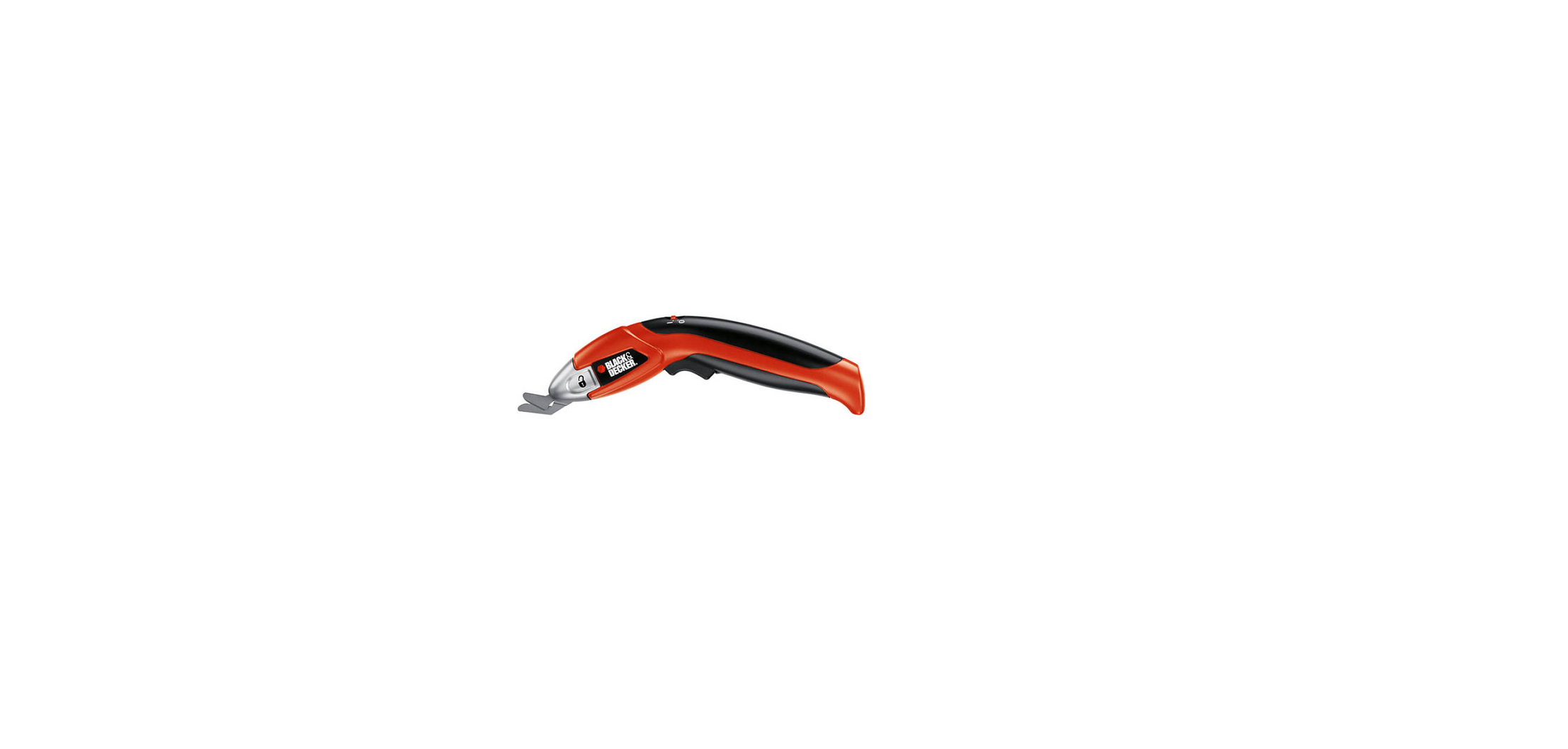Black & Decker 496015-00 User Manual

Overview

Intended use
Your Black & Decker jigsaw has been designed for sawing wood, plastics, ceramics, and sheet metal. This tool is intended for consumer use only.
General safety rules
Warning! Read all instructions. Failure to follow all instructions listed below may result in electric shock, fire, and/or serious injury. The term “power tool” in all of the warnings listed below refers to your mains-operated (corded) power tool or battery-operated (cordless) power tool.
SAVE THESE INSTRUCTIONS.
Work area
- a. Keep the work area clean and well-lit. Cluttered and dark areas invite accidents.
- b. Do not operate power tools in explosive atmospheres, such as in the presence of flammable liquids, gases, or dust. Power tools create sparks that may ignite the dust or fumes.
- c. Keep children and bystanders away while operating a power tool. Distractions can cause you to lose control.
Electrical safety
- a. Power tool plugs must match the outlet. Never modify the plug in any way. Do not use any adapter plugs with earthed (grounded) power tools. Unmodified plugs and matching outlets will reduce the risk of electric shock.
- b. Avoid body contact with earthed or grounded surfaces such as pipes, radiators, ranges, and refrigerators. There is an increased risk of electric shock if your body is earthed or grounded.
- c. Do not expose power tools to rain or wet conditions. Water entering a power tool will increase the risk of electric shock.
- d. Do not abuse the cord. Never use the cord for carrying, pulling, or unplugging the power tool. Keep the cord away from heat, oil, sharp edges, or moving parts. Damaged or entangled cords increase the risk of electric shock.
- e. When operating a power tool outdoors, use an extension cord suitable for outdoor use. The use of a cord suitable for outdoor use reduces the risk of electric shock.
Personal safety
- a. Stay alert, watch what you are doing, and use common sense when operating a power tool. Do not use a power tool while you are tired or under the influence of drugs, alcohol, or medication. A moment of inattention while operating power tools may result in serious personal injury.
- b. Use safety equipment. Always wear eye protection. Safety equipment such as dust masks, non-skid safety shoes, hard hats, or hearing protection used for appropriate conditions will reduce personal injuries.
- c. Avoid accidental starting. Ensure the switch is in the off position before plugging in. Carrying power tools with your finger on the switch or plugging in power tools that have the switch on invites accidents.
- d. Remove any adjusting key or wrench before turning the power tool on. A wrench or a key left attached to a rotating part of the power tool may result in personal injury.
- e. Do not overreach. Keep proper footing and balance at all times. This enables better control of the power tool in unexpected situations.
Power tool use and care
- a. Do not force the power tool. Use the correct power tool for your application. The correct power tool will do the job better and safer at the rate for which it was designed.
- b. Do not use the power tool if the switch does not turn on and off. Any power tool that cannot be controlled with the switch is dangerous and must be repaired.
- c. Disconnect the plug from the power source before making any adjustments, changing accessories, or storing power tools. Such preventive safety measures reduce the risk of starting the power tool accidentally.
- d. Store idle power tools out of the reach of children and do not allow persons unfamiliar with the power tool or these instructions to operate the power tool. Power tools are dangerous in the hands of untrained users.
- e. Maintain power tools. Check for misalignment or binding of moving parts, breakage of parts, and any other condition that may affect the power tool operation. If damaged, have the power tool repaired before use. Many accidents are caused by poorly maintained power tools.
- f. Keep cutting tools sharp and clean. Properly maintained cutting tools with sharp cutting edges are less likely to bind and are easier to control.
Features
- Cutting head
- Lock switch
- On/off trigger switch
- Charging socket
- Charger plug
- Charger
Warning! Before cleaning, adjustment, or replacing the cutting head. Set the lock switch to OFF (0)
Use
Warning! Let the tool work at its own pace. Do not overload.
Charging the battery (fig. B)
The battery needs to be charged before first use and whenever it fails to produce sufficient power on jobs that were easily done before. When charging the battery for the first time, or after prolonged storage, it will only accept an 80% charge. After several charge and discharge cycles, the battery will attain full capacity. The battery may become warm while charging; this is normal and does not indicate a problem.
Warning!
Do not charge the battery at ambient temperatures below 4 °C or above 40 °C. Recommended charging temperature: approx. 24 °C.
- To charge the battery, insert the charger plug (5) into the charging socket (4).
- Plug in the charger (6). Switch on at the mains.
- Leave the tool connected to the charger for 12 hours.
The charger may hum and become warm while charging; this is normal and does not indicate a problem. Generally, a charging time of 8 hours will enable the tool to operate at an effective power level for most tasks. However, further charging for up to 12 hours could significantly increase the run time, depending on the battery and charging conditions.
- Before using the tool, unplug the charger and disconnect the tool from the charger.
Switching on and off (fig. C)
- To switch the tool on, push the lock switch (2) into the ON position (I) and squeeze the trigger switch (3).
- To switch the tool off, release the trigger switch and slide the lock switch to the OFF position (0).
Cutting
Hold the tool firmly while cutting
- Switch the tool on and let the blade run freely for a few seconds before starting the cut.
- Apply only gentle pressure to the tool while performing the cut.
Keep hands away from the cutting area and be aware of materials and surfaces under the cutting area that the blade may contact. Do not force the tool. If the tool will not cut, consider the thickness or hardness of the material, does the tool require charging, does the cutting head require replacement? Do not attempt to cut metal or materials that may damage the cutting head. Warning! Before cleaning, adjust or replace the cutting head. Set the lock switch to OFF (0).
Maintenance
Your Black & Decker tool has been designed to operate over a long period of time with a minimum of maintenance. Continuous satisfactory operation depends upon proper tool care and regular cleaning. Your charger does not require any maintenance apart from regular cleaning. Warning! Before performing any maintenance on the tool, unplug the charger before cleaning it.
- Regularly clean the ventilation slots in your tool and charger using a soft brush or dry cloth.
- Regularly clean the motor housing using a damp cloth. Do not use any abrasive or solvent-based cleaner. Never let any liquid get inside the tool and never immerse any part of the tool into liquid.
Replacing the cutting head.
The cutting head contains no serviceable parts and should be replaced whenever worn or damaged. Do not attempt to sharpen the cutting surfaces. Replacement cutting heads are available from your Black & Decker repair agent.
Fitting and removing the cutting head (fig. A)
Remove the cutting head (1) for cleaning or replacement.
- Separate the scissor blades and set the lock switch to the OFF (0) position.
- To exchange cutting heads, grasp the scissors as shown in Figure A with fingers at the side of the cutting head and the hand away from the blades.
- Press in on the sides of the cutting head and pull straight out.
- To attach a cutting head, line it up with the body of the scissors and push it on until it snaps into place. If the cutting head does not line up easily, carefully separate the blades from each other first then re-attach.
Protecting the environment
Should you find one day that your appliance needs replacement, or if it is of no further use to you, think of the protection of the environment. Black & Decker repair agents will accept old Black & Decker tools and ensure that they are disposed of in an environmentally safe way.
A separate collection of used products and packaging allows materials to be recycled and used again. The reuse of recycled materials helps prevent environmental pollution and reduces the demand for raw materials. Local regulations may provide for a separate collection of electrical products from the household, at municipal waste sites, or by the retailer when you purchase a new product. Black & Decker provides a facility for the collection and recycling of Black & Decker products once they have reached the end of their working life.
To take advantage of this service please return your product to any authorized repair agent who will collect them on our behalf. You can check the location of your nearest authorized repair agent by contacting your local Black & Decker office at the address indicated in this manual. Alternatively, a list of authorized Black & Decker repair agents and full details of our after-sales service and contacts are available on the Internet at: www.2helpU.com.
Batteries
Black & Decker batteries can be recharged many times. At the end of their useful life, discard batteries with due care for our environment: Run the battery down completely, then remove it from the tool. NiCd batteries are recyclable. Take them to any authorized repair agent or a local recycling station.
Technical data
- Voltage Vdc 3.6
- No-load speed min-1 9000
- Weight kg 0.3
- Charger
- Input voltage Vac 230
- Frequency Hz 50
- Approx. charging time h 12
- Charging current mA 140
- Weight kg 0.2
Guarantee
Black & Decker is confident of the quality of its products and offers an outstanding guarantee. This guarantee statement is in addition to and in no way prejudices your statutory rights. The guarantee is valid within the territories of the Member States of the European Union and the European Free Trade Area.
If a Black & Decker product becomes defective due to faulty materials, workmanship, or lack of conformity, within 24 months from the date of purchase, Black & Decker guarantees to replace defective parts, repair products subjected to fair wear and tear, or replace such products to ensure minimum inconvenience to the customer unless:
- The product has been used for trade, professional, or hire purposes;
- The product has been subjected to misuse or neglect;
- The product has sustained damage through foreign objects, substances, or accidents;
- Repairs have been attempted by persons other than authorized repair agents or Black & Decker service staff.
To claim the guarantee, you will need to submit proof of purchase to the seller or an authorized repair agent. You can check the location of your nearest authorized repair agent by contacting your local Black & Decker office at the address indicated in this manual. Alternatively, a list of authorized Black & Decker repair agents and full details of our after-sales service and contacts are available on the Internet at: www.2helpU.com
Please visit our website www.blackanddecker.co.uk to register your new Black & Decker product and to be kept up to date on new products and special offers. Further information on the Black & Decker brand and our range of products is available at www.blackanddecker.co.uk
REFERENCE LINK
https://www.blackanddecker.com/collections/power-tools-accessories-parts





